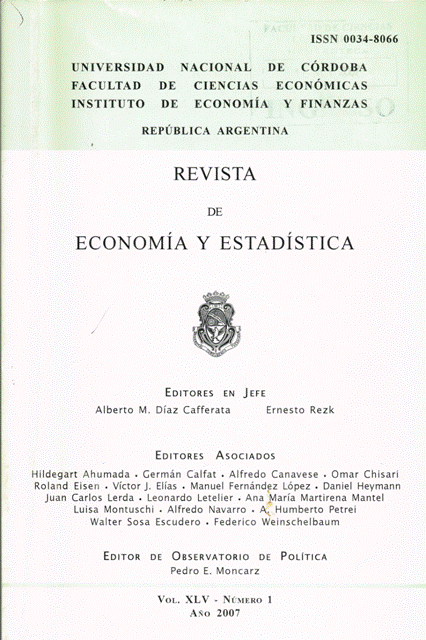Latin America’s Response to China and India: Overview of Research Findings and Policy Implications
DOI:
https://doi.org/10.55444/2451.7321.2007.v45.n1.4083Keywords:
economic theory and research, free trade, trade policy, markets and market accessAbstract
The economic success of China and India is looked upon with admiration but also concern about the effects that the growth of these Asian economies may have on the Latin American and Caribbean (LAC) region’s manufacturing and services sectors. The evidence summarized here indicates that certain manufacturing and service industries in some countries, particularly in Mexico and to a lesser extent in Central America and the Caribbean, have been negatively affected by Chinese and Indian competition in third markets. Also, LAC imports from China and India have been associated with modest unemployment and adjustment costs in manufacturing industries. Nevertheless, there is substantial evidence of positive aggregate effects for LAC economies associated with China and India’s greater presence in world exports, financial flows, and innovation. Even though there is significant heterogeneity of such effects across LAC sub-regions, China and India’s growth is creating new production possibilities for LAC economies, in particular for sectors that rely on natural resources and scientific knowledge, which not only benefit from the growing internal markets of the two Asian economies and their effect on commodity prices, but also from complementarities in third markets through production networks, cheaper inputs and capital, and innovation spillovers. In sum, China and India’s growth has not been a zero-sum game for LAC, but the potential benefits are not being fully realized. It is crucial that LAC countries take full advantage of the growing presence of China and India in world markets by adopting offensive strategies that facilitate both the participation of LAC firms in global production networks and their commercial presence in the two Asian economies’ markets. Governments should avoid protectionist temptations and should focus on facilitating the adjustment in affected sectors, as well as the emerging structural shift towards more natural-resource and scientific-knowledgeintensive sectors by adopting adequate education, innovation (both patentable and non patentable), natural resource management, and rural development policies.
Downloads
Downloads
Published
How to Cite
Issue
Section
License
Copyright (c) 2007 Daniel Lederman, Marcelo Olarreaga, Guillermo Perry

This work is licensed under a Creative Commons Attribution-NonCommercial-NoDerivatives 4.0 International License.
Authors who have publications with this journal agree to the following terms:
Authors retain their copyright and grant the journal the right of first publication of their work, which is simultaneously subject to the Creative Commons Attribution-NonCommercial-NoDerivatives 4.0 International License that allows third parties to share the work provided that its author and first publication in this journal are indicated.
Authors may adopt other non-exclusive licensing arrangements for distribution of the published version of the work (e.g. depositing it in an institutional telematic archive or publishing it in a monographic volume) as long as the initial publication in this journal is indicated.
Authors are allowed and encouraged to disseminate their work via the Internet (e.g. in institutional telematic archives or on their website) before and during the submission process, which can lead to interesting exchanges and increase citations of the published work. (See The Open Access Effect)









